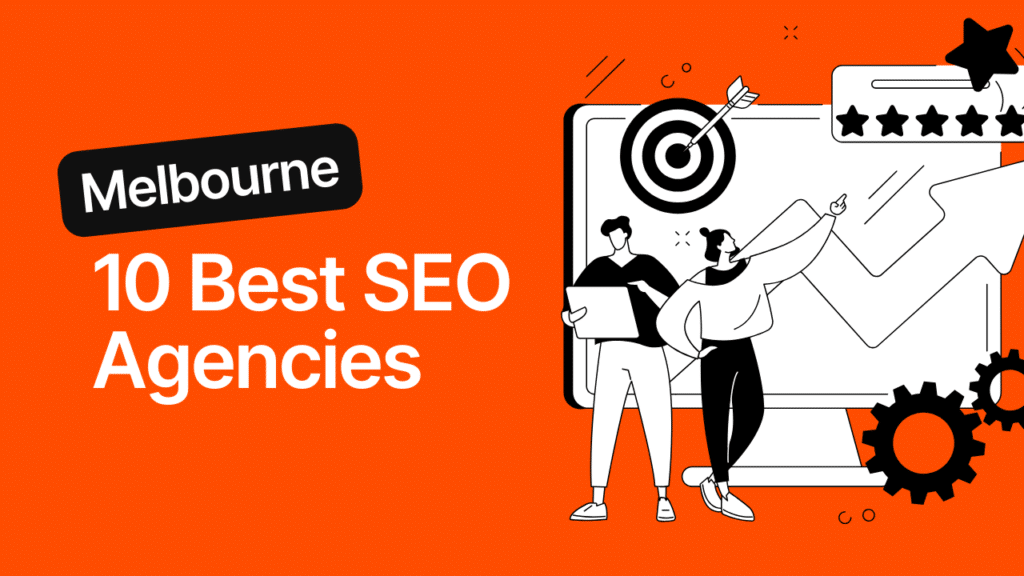Increase your website traffic?

Written by: Benjamin Paine
Managing Director at Digital Nomads HQ
Why trust Digital Nomads HQ?
Digital Nomads HQ is continually recognised as a leading agency & industry "thought-leader" in the digital marketing segment. Known for our expert insight, industry data, and new innovative finding within the Digital Marketing industry. Our agency is frequently cited as a trusted source of credible marketing information, demonstrating the value and impact of our work in shaping industry standards and practices.

What is Programmatic SEO?
So, what is programmatic SEO?
Put simply…
It’s the process of creating large quantities of pages and or content across thousands of keywords automatically.
Now, automatically is a bold term… it does still take time, strategy and understanding, however it does remove the manual process of developing pages one by one, writing content and designing thousands of pages which could take months to complete.
Programmatic SEO would allow you to facilitate this in a matter of days or even hours.
How does this work?
Programmatic pages are generally created from large databases of data or content, such as products, pricing information, business information, and financial information.
Let’s give you some examples of how this works…
Programmatic SEO Examples
Example 1: Tripadvisor
An example would be a company like Tripadvisor;
When you search for “Top hotels in Melbourne” or “Best Melbourne Accommodation”
There is already pages / content created speaking to these primary search terms… See example;

So this doesn’t mean that the digital team for Trip advisor is developing a location page for every suburbs and location globally to ensure there is a page speaking to each keyterm… no.
This is a process of programmatic SEO – as new hotels or accommodation is added to their website, pages will be dynamically or (automatically) created if the location isn’t previously generated… allowing new pages and content to be published based on user input rather than relying on manual creation.
This is programmatic SEO.
Example 2: Clutch.co
Another example for this would be Clutch.co;
Working on a similar framework to Trip advisor, as new agencies or businesses are added to the directory within Clutch, location based pages by both service offering and location can be automatically generated into the website.

Use Case Example: If a new agency signs up to Clutch and they are located in Berlin.
Clutch’s programmatic coding will create a page listing “agencies in Berlin,” as it now has the ability to list agencies in this location.
Along with this, say your agency offers web design & SEO services…
Both “web design agencies in Berlin” & “SEO agencies in Berlin” can also be generated based on this agency being listed.
In summary,
One agency gets listed in a previous category & location not listed, and based on this new listing… 3 new pages are created.
Regular SEO vs. Programmatic SEO
While both regular SEO campaigns and programmatic SEO have the same goal… creating content for users, that search engines will leverage to generate their website more traffic.
Goal = Organic Traffic
The way in which they go about achieving this is what sets them apart…

Regular SEO
Regular SEO – This is a long-term strategy, leveraging page optimisation and the use of high-quality content.
Often a key part of a regular SEO campaign is to build landing pages and blog content (manually) and this is often where to two campaigns differ.
Manual content creation and creating high quality content to compete with highly competitive keywords with long-form blogs or articles 3000-4000+ words in length… isn’t generally part of programmatic as its not replicated by automation.
Programmatic SEO
Programmatic SEO – This is a quicker process to achieve that same goal… more traffic.
It’s a way of generating multiple pages or large-scale content quickly… ignoring the manual process and using an identical page layout of theme for the content to be distributed to.
It allows you to create thousands of pages from a database and leverage a template for the content to be written.
Listen to myself (Benjamin Paine) and our Head of SEO break down Programmatic SEO in our recent video;
The Two Core Pillars of Programmatic SEO
There is two core pillars that creates a successful programmatic SEO implementation.
Low competition keywords & Search intent.
Low-Competition Keywords
Programmatic content works by targeting thousands of keywords that are phrase-matched with one single template.
So, to ensure a campaign is successful, you have to undertake keyword research to discover the seed keyword that you wish to create thousands of variations.
An example of this would be a term such as; “house prices”

Looking at this example, we have 4.4k keywords in Australia with a national search volume of 40,000 searches per month.
Successfully implementing a programmatic SEO campaign with a database of “house prices” by suburb and location across Australia could generate substantial traffic to your website.
Search Intent
From here, you need to uncover what type of content people would be looking for when searching for “house prices” in each location.
One of the easiest ways to understand this is to jump into SERPs yourself and search for some of the keywords you have listed.
You’ll start to identify the top-ranking pages and the similarities in the content they are publishing.
In this example, websites are displaying median house prices in the suburbs, recent sales and break downs of house costs by size.
This gives us an idea of the content or data that we would need from our database to make this programmatic campaign possible.
The programmatic content will require median house prices, recent sales, etc., by each suburb and location for distribution through to our defined template.
Is Programmatic SEO "spammy"
Programmatic SEO needs to be used cautiously… any website that is running thousands of content, runs the risk of “Thin” content… something that Google has addressed in its recent June 2024 Spam update.
We want to ensure that the distribution of content isn’t going to violate Google’s spam policies… requiring the content being distributed to be VALUABLE content to the users searching.
So, what makes a GOOD programmatic SEO campaign if so many end up with thin content or against the spam guidelines?
It comes down to both data and the content relevancy…
Relevant, unique data that is helpful to your users will win… and equally be not deemed as spam.
The opposite is also true,
ChatGPT with a Google sheet script to generate the data and content required… will, yes, in theory, work.
But,
It will be replicated content… not unique and will potentially be penalised in the long term.
The challenges of programmatic SEO
So, yes by now you understand there is some challenges in programmatic SEO… and we’ll if there wasn’t then everyone would be doing it!
Here are some additional takeaways to consider with programmatic SEO;
It isn’t for everyone!
Just because you have a website, that doesn’t mean you should be considering programmatic SEO solutions.
It should be used only when relevant and makes sense for your business and product that you are offering. It the solution will be helpful to your audience and you can create highly relevant content with the data that you have available… then go for it!
AI is changing SEO.
Stay away from “Doorway pages”
What is a doorway page?
Doorways are both sites or pages that are solely created with the intention to rank highly and funnel users to a particular page…
This concept is against Google guidelines and if often seen in programmatic SEO when users are trying to leverage high volume search to drive users to a secondary intent through the large volume of content created.
Here’s Google’s description on it…

Ensure your programmatic campaign is in alignment with best practise and Googles guidelines to ensure your complete website isn’t penalised for an implementation.
How to get started with programmatic SEO (pSEO)?
With all these points covered, by now you are probably wondering if its possible to get started with a programmatic SEO campaign.
It’s complicated, and with data points requiring to be sourced, synced and unique… creating examples such as Trip advisor shown above requires both SEO strategists and web developers combined.
Not every project has to be as complex as the examples shown… think about your target audience and potential data you have as a business already… this reduces the data sourcing aspect of the campaign.
So, to summarise this Programmatic SEO guide,
Here’s a quick 5 step process to get your started…
1. Keyword Research:
- Research & identify your primary terms: These are going to be the categories relevant to your niche (e.g. “hotels”, “property”, “recipes” etc.)
- Find your modifiers: These are the modifiers that will be added to your primary terms in combination to create the target long-tail keywords your programmatic campaign will target.(e.g., “in Sydney,” “under $100,” “vegan”).
- Generate keyword combinations: Use tools, scripts or AI to combine your primary terms with your modifiers to create a large list of potential keywords.
- Validate keywords: Analyse search volume, competition, and relevance to ensure the keywords are worth targeting.
2. Data Analysis:
- Search intent: Understand the user’s goal behind each keyword (e.g., informational, transactional, navigational).
- SERP analysis: Analyse the search engines around your primary keyword searches, finding common content practises, relevant content required alongside & additional opportunities.
3. Crafting Base Content:
- Template creation: Develop a landing page template with placeholders for dynamic elements (e.g., city name, product name). This is where your content and keywords / modified keywords will be mapped into.
- Content guidelines: Define the structure, tone, and style of the content to ensure consistency and quality… And make sure its USER focused, we don’t want doorway pages or thin content.
4. Content Generation:
- Automation tools: Utilise web tools, plugins or scripts to generate the scale of landing pages (WP All Import & ACF Advanced Custom Fields is a personal preference on WordPress).
- Quality assurance: Implement checks to ensure the generated content is unique, relevant, and free of errors.
5. Post-Deployment Management:
- Monitor performance: Track rankings, traffic, and conversions for your pSEO pages.
- Refine strategy: Analyse data to identify areas for improvement and adjust your keyword targeting or content strategy accordingly.

"Inside the agency" A Digital marketing podcast
Tune in to our weekly Youtube and Podcasts discussing industry changes, news & hot topics across all digital marketing channels.







